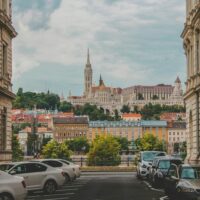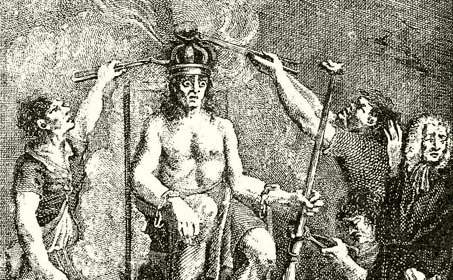The martyr criminal of Hungarian history and the peasants’ revolt led by him
The date is 1514 when the Ottoman fear was still present, but the Hungarian kingdom faced another threat, one that changed Hungarian society for centuries and hindered social and economic development: the peasants’ revolt led by György Dózsa.
Tension building up
After the independent and strict ruling of King Matthias Corvinus, the magnates quickly made use of him having no male heir and invited a foreign ruler to become king. They wanted someone who could be influenced easily and thus be ordered around, with their choice falling on Vladislaus, the son of the king of Bohemia, from the Jagiellon house.
Vladislaus II’s Hungarian reign lasted from 1490 until 1516, and it proved to be a fruitless and poor period. Over these years, Vladislaus failed to keep Matthias’ order and economic stability, and on top of the political rivalry among the nobility, Vladislaus was far from prepared for an Ottoman raid. Still, his worst mistake as a king was the oppression of the serfs, which eventually lead to a revolt in 1514.
A new enemy
Even though thanks to János Hunyadi’s victories over the Ottoman forces, which pushed them back for a few years, the Ottoman Empire still posed a threat to Europe and Christianity. Early in 1514 Pope Leo X authorised a Hungarian crusade against the Ottoman Empire, where György Dózsa was tasked with the organisation of the army and with carrying out the military mission by a Hungarian chancellor, Tamás Bakócz.
Dózsa began assembling his army which consisted mostly of peasants and friars, and other low-ranking members of society. When the first military training session commenced in May, his army of ‘hajdús’ numbered at 40 thousand men. Then came the problems…
The crown did not provide Dózsa’s peasant army with any kinds of supplies, be it weaponry, food or clothes, to which the army presented their disappointment.
The peasants were further disillusioned when harvest time arrived, and their landlords demanded them to return to the fields from training. Should they refuse orders, their families will pay for it. Let us not forget that the peasants and serfs were in a heavy situation having very limited rights, to begin with.
In the end, the bitter and resentful sentiments grew so strong among the army, that they started looting the landlords when they marched across the Great Hungarian Plain. Bakócz decided to cancel the crusade and call of Dózsa, but there was no stopping them now.
György Dózsa, his brother Gergely and parson Lőrinc Mészáros all believed that the king and the magnate showcased pro-Ottoman sentiments, so
while György was still intent on continuing the fight against the Ottomans, the latter two assigned a new enemy: the crown.
Since György Dózsa was the leader of the makeshift army, he was losing face due to him not wanting a revolt against the nobility. Finally, he gave in.
Members of Dózsa’s army were called the ‘Kuruc’, and their number was growing continually, as almost every peasant was angry about their situation. They have burnt down numerous castles and manor houses, but only targeted greedy or cruel landlords. Dózsa even managed to seize a couple of fortresses, thus acquiring cannons and other weapons.
In July, however, Dózsa’s party was beaten and he was taken as a prisoner by John Zápolya and István Báthory.
The bloody consequences
Dózsa suffered a gruesome and humiliating death: the nobility mockingly called him the ‘King of Peasants’ and had him fixed to a heated iron throne, forcing him to wear a heated iron crown along with a sceptre. Nine of his rebels were captured who were forced to tear into and eat his flesh.
His brother was cut in three right in front of him, despite György begging for Gergely’s life.
Altogether 70 thousand peasants were tortured, though not with the intention of killing them, but to make an example out of them, as the gentry still needed the workforce. This lead to a serious political division in the kingdom and slowed down economic development. The little rights that the serfs had before the revolt were almost all revoked, forcing them into half-slavery.
Dózsa is remembered both as a Christian martyr and dangerous criminal. His memory lives vividly up to this day, but his importance in shaping society was the most prominent during the Communist regime. In Hungary, he was respected as a hero for his anti-feudal efforts, while in Romania for his revolutionary visions. Several street names, squares, and even a metro station are named after him in Budapest, but streets bear his name all over Hungary, Romania and even Serbia.
featured image: Dózsa’s crowning, http://mek.oszk.hu
Source: Daily News Hungary
please make a donation here
Hot news
Important: One week left to register for EP election postal voting
PHOTOS: New leisure venue opens in the heart of Budapest
Orbán-Zelensky talks: Hungary supports every peace initiative
Guest workers come to Hungary even though they could earn more in Western Europe
PHOTOS: 6 small symbols of Budapest
Hungarian government to spend huge amounts on worker housing





